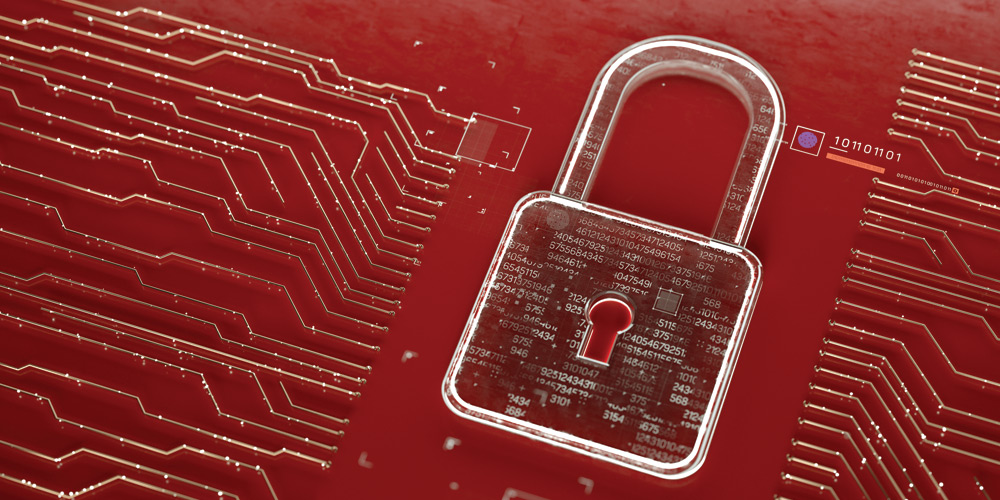Automating trust with new technologies
Blockchain, IoT, and AI offer companies new ways to track, secure, and verify their assets.
How much does trust cost your company? The OECD estimates that US$461 billion worth of counterfeit goods are sold annually. That’s 2.5 percent of global trade. In other words, one out of 40 items on the global marketplace is a fake. If you’re heading a company, one of your responsibilities is to make sure that none of those fake items ends up as a part in your products or, even worse, in the market with your company’s name on it. Prevention typically requires big spending on duplicative testing, manual auditing, reconciliation, legal fees, insurance, and more.
In the airline industry, for example, many carriers hold planes on the ground longer and keep more spare parts on hand than technically necessary, as well as skip potential savings available from used parts and planes — all because they can’t fully trust their provenance. Trust also comes at a cost in the healthcare industry, where physician networks and hospitals need to confirm each new clinician’s credentials: educational history, licenses, regulatory history, and more. That typically takes months, during which the clinician can’t work, and requires contacting more than a dozen entities. Healthcare payors spend more than $2 billion a year maintaining provider databases.
Fortunately, emerging and established technologies can now be combined to provide companies with ways to automate trust in physical, digital, and human assets. It’s a premise centered on blockchain, which is then integrated with one or more other essential eight technologies, such as the Internet of Things (IoT) and artificial intelligence (AI). And once trust is automatic, it’s not just costs that fall. Whole new business opportunities emerge.
A more transparent supply chain
A supply chain is a bit like a relay race. Your component or product travels vast distances, with frequent hand-offs from one participant to another. But with automated trust, you can keep track of these assets in real time, both while they’re racing through a complex supply chain and as they change hands among partners, vendors, and customers.
Once trust is automatic, it’s not just costs that fall. Whole new business opportunities emerge.
The need for trust starts when a product or component leaves the factory or farm. A manufacturer that has implemented automated trust creates a digital “birth certificate” with specifications, provenance, cost, and other relevant data. It then enters this birth certificate (usually an IoT tag) into its existing ERP system, integrated with blockchain to create a secure, immutable, cryptographically sealed record. This record is instantly available, in identical form, on the different servers of the participants in this supply chain, such as the manufacturer, logistics providers, distributors, and wholesalers.
Next come IoT sensors, to record location, temperature, ambient vibrations, and other measures to provide continuous end-to-end provenance. The logistics provider scans the sensors to connect them to the blockchain and to the digital birth certificate. As assets change location and condition, IoT sensors gather the data. Blockchain stores it, securely and immutably, with a timestamp on the servers of all of the participants.
Permission to transfer custody, such as from the logistics provider to the warehouse, takes place on the blockchain, which once again creates an immutable, decentralized record. Smart contracts — digitally signed agreements that software executes and enforces — on the blockchain can automate these transfers. Before the warehouse accepts delivery, for example, a smart contract can check the IoT-derived data to make sure that temperature and vibrations during transport were within the permitted range. If problems occurred, the smart contract consults the record to assign responsibility. Another smart contract can automatically calculate (and in some blockchains, even issue) the payment due.
With trusted data, participants can layer on AI-powered analytics. Algorithms can flag parts for maintenance, further analysis, or even immediate interdiction if necessary. AI can also mine data for further insights, such as forecasting maintenance or determining more efficient use.
If a company wants to keep track of digital assets, the same process applies: The maker of the software or service creates a digital birth certificate and enters it into the blockchain. The blockchain then records use, alteration, and sales — all with an unchangeable, distributed record, with smart contracts to automate the workflow, and with AI to draw meaning from the data.
Verification made simple
Whether you’re dealing with sensitive data, machines, or healthcare decisions, it’s important that only the right people with the right qualifications have access. Utilities, for example, may need to confirm hundreds of contractors in a hurry when they hire extra crews to respond to a natural disaster. If a technician without the right credentials so much as touches a pipe, the company typically has to pay a big fine — and redo the work. Yet it can currently take a full day to confirm a single contractor, possibly adding unneeded delays and cost to repairs.
Here, too, a system powered by blockchain, IoT, and AI can be the solution. In this system, long before the natural disaster took place, contractors’ employees have enrolled in the blockchain with their biometrics. They have entered their personal information, credentials, and qualifications. The organizations that issued these credentials have confirmed the employee’s claims, through a workflow tool, also on the blockchain.
Now, when a utility company hires these contractors, IoT sensors, using AI-powered facial recognition, verify individuals’ identity and offer the utility a confirmed record of their qualifications. The blockchain records each of these verifications, creating a work history. Add on another layer of AI to analyze these employees’ records, and the company can get fast insights into which employees should do which task, in which place, at which time.
Any industry in which the workforce needs verified qualifications could benefit. If a given individual’s profile is available on this system, the hiring company can get detailed, trusted information on work history and qualifications — just as if they were already in-house employees. As the gig economy grows, the need for independent contractors to show trusted credentials will grow, too.
Building a new business
Automated trust doesn’t just offer secure, real-time insights into supply chains, employees, and operations. With the right rules of engagement, all users can have their own unique digital signatures with varying levels of permission attached. The owner of the data can grant some users the right to see it, others the right to alter it, and others no access at all. These varying levels of permission make sharing data both flexible and safe.
With trusted data and the ability to share it selectively and securely, new revenue streams and efficiencies are created:
• Decentralized, customized pricing. Parent companies can use blockchain, combined with AI and the IoT, to gather, share, and analyze data to enable more effective pricing decisions at the point of sale.
• Trusted data-driven business models. Whether it’s developing new products or marketing existing ones, automated trust in transaction data — which can inform AI models to forecast markets and consumer tastes — makes new businesses feasible.
• Collaborative R&D. It’s a common problem in joint R&D ventures, in sectors as diverse as pharmaceuticals and gaming: Who owns how much of the result? Combining blockchain and AI can track and analyze who contributed what value to the intellectual property and product.
• Consumer engagement. When you can securely share selected data, you can better share quality and sustainability practices. Consumers, for example, can confirm the provenance, production methods, and validity of perishable food.
• Decentralized identities. With blockchain and AI powering and confirming consumer profiles, consumers can select which aspects of their identity to share with whom. Firms authorized to access these profiles can offer (with the help of AI) customized, enhanced services and experiences based on consumer trust.
With trusted information (from IoT), secure ways to record and share it (through blockchain), and analytics to draw out insights (from AI), the opportunities are endless. That’s why automating trust isn’t just a way to cut down on counterfeit goods, unqualified personnel, and all the costs of confirming assets and people. With the right approach, it’s a foundation for rapid growth in the digital economy.
Author profiles:
- Scott Likens is a principal with PwC US, and is based in Austin. He leads the new services and emerging technology practice, with a focus on how individual technologies are converging to solve problems in new ways.
- Kris Kersey is a director with PwC US, and is based in Pittsburgh. He focuses on digital transformation and blockchain-enabled service offerings in the new services and emerging technology practice.
- Also contributing to this article was PwC US manager Jennifer Hanania.





